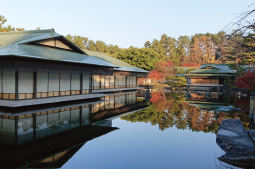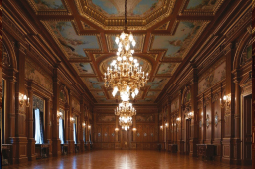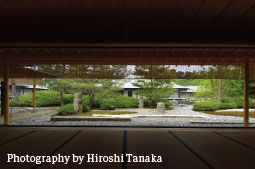Home > Highlighting JAPAN > Highlighting Japan January 2019 > Policy-Related News
Highlighting JAPAN
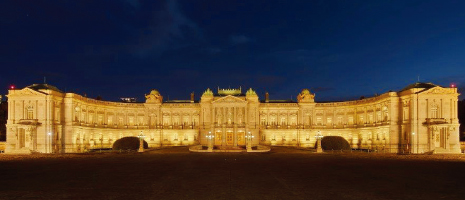
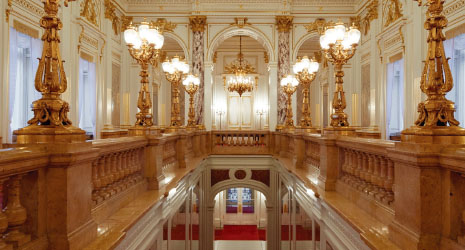
Regal Arenas of Diplomacy and Culture: Japan’s State Guest Houses
The State Guest Houses are facilities that receive distinguished international guests and serve as venues for diplomatic interactions between Japan and the rest of the world. Japan has two State Guest Houses, one in Tokyo and one in Kyoto. Both are open to the public throughout the year. This article introduces the role and history of the State Guest Houses and the highlights of each building.
Japan’s two State Guest Houses receive state and official guests from all over the world, and serve as venues for important international conferences and signing ceremonies—such as welcome ceremonies and summit conferences—including hosting visitors, banquets and summit meetings such as the Tokyo Summit Conference. Located in Tokyo and Kyoto, they are the true diplomatic arenas of Japan.
The Japanese government opened these State Guest Houses in Tokyo and Kyoto for public year-round viewings in 2016, and they have become popular tourist spots for domestic and international visitors. “We opened these facilities that display Japan’s history, culture and arts to the public to help Japan grow as a leading tourist destination,” Takashi Kangoori of the public operation division of the Cabinet Office State Guest Houses explains. “In addition to the usual viewings, we organize events and services to promote the charms of the State Guest Houses to visitors, such as nighttime illuminations and gardens with seasonal flowers at the State Guest House Akasaka Palace. Multilingual audio guides are available for international visitors, and we also offer guided tours in English.”
Tsuyoshi Takeishi works with Kangoori in the same division as the assistant director. “What makes the State Guest Houses different from other tourist facilities is that they have been hosting distinguished international guests since they opened,” he notes. “We’d like our visitors to experience these stages that have supported Japanese diplomacy in person, and appreciate the country’s historical, artistic and cultural aspects they display.”
Each State Guest House has highlights. The State Guest House Akasaka Palace in Tokyo, originally built as a Crown Prince’s palace in 1909, was turned into a facility to receive the increasing number of distinguished guests from overseas in 1974. In 2009 the main building, the main gate and the palace’s fountain were designated as National Treasures—the first architectural works to be selected after the Meiji Period (1868-1912). In the main building, visitors can view small and large halls such as the Kacho no Ma, or Hall of Flowers and Birds, featuring oil paintings and thirty oval cloisonné medallions depicting flowers and birds from both Japan and the Western world. Formerly known as the Ballroom, Hagoromo no Ma (Hall of the Heavenly Robe) sometimes hosts concerts. Sairan no Ma, or Hall Guarded by Mythical Birds, displays gilded reliefs with martial motifs contrasting Japan and the West, such as Japanese swords, sabers and even samurai helmets. Visitors can also visit Asahi no Ma (which is under renovation through March 2019), and the Front Entrance and Large Hall on the second floor.
Visitors may take pictures in the Front Garden, which offers a sweeping 125-meter view of the only Neo-Baroque style palace in Japan, and the Main Garden has a beautiful fountain as old as the building. Visitors should not miss the Japanese design and authentic Japanese hospitality of the Japanese-style annex, Yushintei, which is only accessible on reserved guided tours. This annex exalts the beauty of Japanese houses and gardens, represented by beautiful red and white-flowered plum trees and a rippling pond that reflects wavy light onto the wide veranda.
The Kyoto State Guest House is a more modern facility, opened in 2005 and designed to display the traditions of style and beauty of Japanese architecture with contemporary building technology. Its highlights include a garden that integrates a vast pond with the building. Fuji no Ma, or Wisteria Room, has a tapestry inspired by Japanese motifs covering a wall and kirikane (gold leaf cutting) stage doors crafted by a skilled Japanese artisan. The Kiri no Ma, or Paulownia Room, has an impressive 12-meter-long black lacquer low table. Other marvels are the main entrance, where guests are greeted by a door paneled with massive single boards hewn from a 700-year-old Japanese elm, and other rooms such as Yubae no Ma and Juraku no Ma.
The Kyoto State Guest House building itself showcases eleven types of traditional craftsmanship and the furnishings incorporate fourteen different kinds of crafts. In a city whose many temples and shrines make it a symbol of Japanese history and culture, the Kyoto State Guest House is not to be missed.
© 2009 Cabinet Office, Government of Japan
